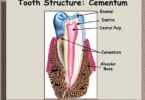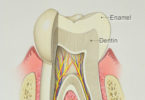Genes and Chromosomes are obviously two different terms, however, they confuse a lot of students and other people searching for their meanings. In this article, we are going to explain the major difference between chromosomes and genes using their scientific definitions, examples, and functions in the human body.
As far as a chromosome is concerned, it is a nuclear structure present within our body which works as a carrier for carrying the blueprint of various characteristics which are to be transferred from parents to the offspring. They aren’t usually visible and we can only see them with a microscope during the process of cell division.
On the other hand, a Gene is just a portion of DNA molecule which is responsible for carrying a message resulting in the synthetic of proteins from amino acids. We shall move ahead now and discuss the major differences between Chromosomes and Genes.
Chromosomes: Definition, Example, and Functions.
Chromosome is the rod-shaped nuclear structure that carries a complete blueprint of all the hereditary characteristics of that species. A chromosome is formed from a single DNA molecule coiled around histone molecules. Each DNA contains many genes.
Normally, the chromosomes are not visible in the nucleus under microscope. Only during cell division, the chromosomes are visible under microscope. This is because DNA becomes more tightly packed just before cell division, which makes the chromosome visible during cell division.
All the dividing cells of the body except reproductive cells contain 23 pairs of chromosomes. Each pair consists of one chromosome inherited from mother and one from father. The cells with 23 pairs of chromosomes are called diploid cells. The reproductive cells called gametes or sex cells contain only 23 single chromosomes. These cells are called haploid cells.
Genes: Definition, Example, and Functions.
Gene is a portion of DNA molecule that contains the message or code for the synthesis of a specific protein from amino acids. It is like a book that contains the information necessary for protein synthesis. Gene is considered as the basic hereditary unit of the cell. In the nucleotide of DNA, three of the successive base pairs are together called a triplet or a codon.
Each codon codes or forms code word (information) for one amino acid. There are 20 amino acids and there is separate code for each amino acid. For example, the triplet CCA is the code for glycine and GGC is the code for proline.
Thus, each gene forms the code word for a particular protein to be synthesized in ribosome (outside the nucleus) from amino acids.
Genetic Disorders:
A genetic disorder is a disorder that occurs because of the abnormalities in an individual’s genetic material (genome). Genetic disorders are either hereditary disorders or due to defect in genes.
Causes of Genetic Disorders:
Genetic disorders occur due to two causes:
- Genetic variation: Presence of a different form of gene
- Genetic mutation: Generally, mutation means alteration or a change in nature, form, or quality. A genetic mutation refers to change of the DNA sequence within a gene or chromosome of an organism, which results in the creation of a new character.
And this was everything you needed to know about the major difference between chromosomes and genes. Keep visiting our website to remove more of such scientific confusions.







Leave a Comment
You must be logged in to post a comment.